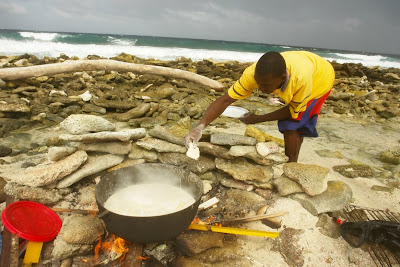Colombian Halloween
While October 31st is Halloween here in the US, there is a similar -- typically -- less scary holiday in Colombia on the same day. Until 2001, it was called Día de los Niños. However, in 2001, spurred on by the ICBF and concerns over the violent nature of Halloween, the official title of Día de los Niños was removed and passed on to the last Saturday in the month of April -- it is called the Día de los Niñez y Recreacion . Halloween is now just Halloween or Noche de Brujas. On this day, children dress up as their favorite character. Walking the streets, you will see Batman, fairies, dogs, cats, ninjas, cowboys, princesses, etc. The children will get candy, balloons, ice cream and other gifts in celebration. Unlike here in the US, where kids go from house to house seeking candy. Most kids are taken to shopping malls or grocery stores (Centros Comerciales) where they ask for and receive candy. So, what is the Colombian Trick or Treat saying? It goes like this: Triqui Triqui Halloween...










